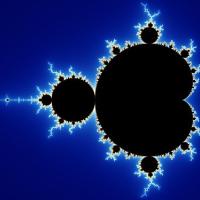
Complex multiplication
Thanks to A Moss for bringing this puzzle to our attention.
This puzzle concerns complex numbers but don't worry. You don't need to know anything about complex numbers to solve it!
Background
A complex number is often written as the sum of a real and an imaginary part as follows:
i is a symbol representing the square root of minus one (sometimes j is used instead), a is the real part and b is the imaginary part. a and b are both real numbers.
Suppose that we have two complex numbers that we wish to multiply together to make a third.
If we expand the brackets on the right hand side we get the following expression:
But as i2 is minus one (by definition) we can reduce this to the following two expressions for p and q:
This process of multiplying two complex numbers together is something which the computer programs that generate those beautiful fractal images you so often see in books must do over and over again. Traditionally, computers have been able to add and subtract much faster than they can multiply and divide. Computer programmers are therefore always looking for ways of reducing the number of multiplications required in each calculation.
The problem
The values of the variables p and q are defined in terms of a, b, c and d as follows:
As written, the procedure for calculating p and q, given the four values a, b, c and d requires four multiplications.
Your challenge is to describe a procedure which uses fewer than four multiplications.
We will publish the best explanation in the next issue, along with the answer to the problem itself.